Tame the Toy Chaos: Bin Storage for All
http://decor-ideas.org 01/02/2014 07:22 Decor Ideas
Kids collect toys like a magnet picks up metal shavings. If you don’t stay on top of them, not only will Barbie’s Dreamhouse be a mess, but so will yours. The good news is that, with a few simple moves, organizing the stuff of a kid’s world can be child’s play. Your first line of defense should be setting up appropriate containers where the action happens, be it in a playroom or a living room. Here’s how.
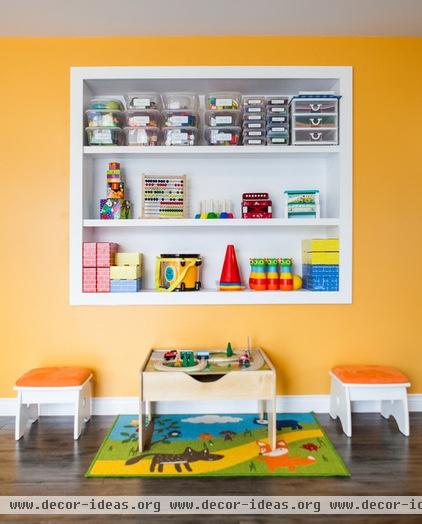
Project: Setting up a bin system for toy storage.
Why: The best way to declutter a room is to give everything a place.
Who to hire: Retrofitting an existing shelf with bins could be a DIY task. For a larger project that includes buying new furniture or building custom cabinetry or closets, an interior designer, a professional organizer or a closet designer can help. A carpenter can also create built-in storage.
Cost range: $200 to $10,000. To add a few bins costs very little. To design and build permanent cabinets or a storage wall costs more.
Lisa Hershman of Play Chic Interiors in New York specializes in designing rooms for kids, and she explains the costs this way:
$200: Buys an assortment of bins for the floor or existing shelves.$600: Could buy a vintage piece — such as a buffet or an armoire — that could be repurposed for toy storage.$1,000 to $1,200: Could secure a substantial bookcase, a baker’s rack or a modular shelving system.$5,000: Buys semicustom cabinetry from a closet fabricator.$10,000: Could buy a custom piece from a carpenter.
“You can find a designer or an organizer to work with at any of these price points,” Hershman says. “But these numbers reflect the cost of goods and not design fees.” Toy storage is an area where people tend to buy things they don’t need and underutilize space, so hiring a professional can end up saving money.
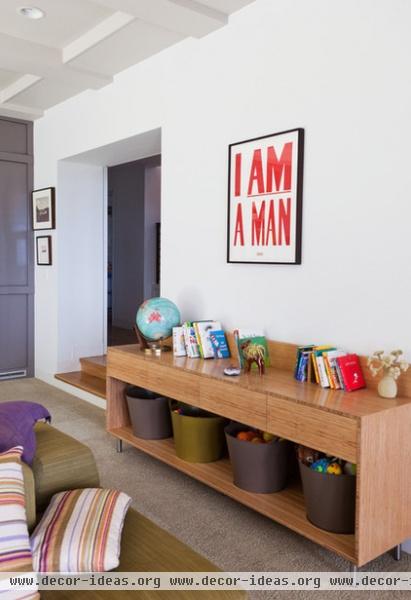
How: She says that container choice can be everything. “For a playroom or a child’s room, I favor bins that are clear or low enough for a child to peek in and see what’s inside,” she says. “If you get plastic bins that are frosted, it blurs everything out a bit for a uniform look, but you can still easily see what’s inside.”
If your little ones are playing in a room that adults also use, it’s best to choose opaque containers that can happily coexist with people of all ages.
“I’m a huge fan of open bins with no lids, because it makes cleanup that much easier and faster. If you have little kids, it’s good to put bins low, where they can reach them, so they can both access their toys and put them away,” Hershman says. “Parents complain about their kids not picking up, but if they can’t reach the storage, it’s not possible.”
In this room, by Natasha Barrult Design, a simple console became a storage powerhouse with the addition of bins that appeal to all ages.
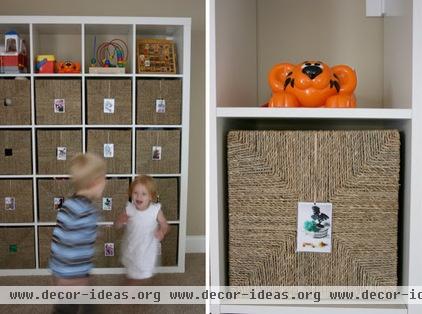
Because rattan bins have a grown-up aesthetic that fits with a variety of decor, Hershman often chooses them for rooms used by both kids and adults. “But if you use opaque containers that look alike, you will have to label them,” she says. “If your kids can’t read, use pictures or symbols on the labels.”
With tall storage units or shelves, she advises putting seldom-used items or toys that require supervision in bins up top. Beloved and frequently used playthings need to be on more accessible shelves.
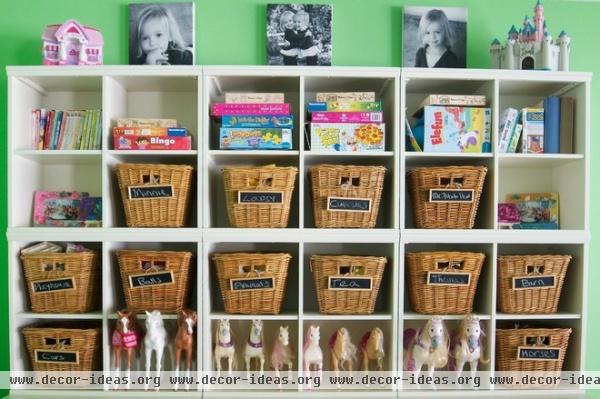
“I love chalkboard labels, because they are so flexible,” she says. Here larger sculptural items (the horses) and toys that come in their own boxes (games) are grouped together, while smaller objects (such as tea party accessories and cars) are stashed in opaque baskets with chalkboard labels.
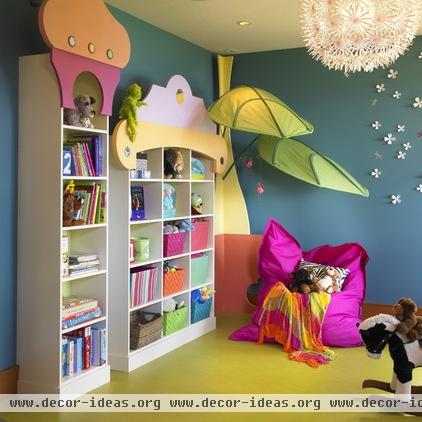
For kids who can’t yet read, color coding can be a parent’s best friend. Hershman says outfitting shelves with bins of varying colors — as designers from The Sky is the Limit Design in British Columbia did here — is a smart idea for parents of preschoolers. “The key is to choose a color for one item — say, blue for cars — and always sort them that way,” she says. “You can also use color to separate toys by owner — for instance, one sibling gets green and another gets yellow.”
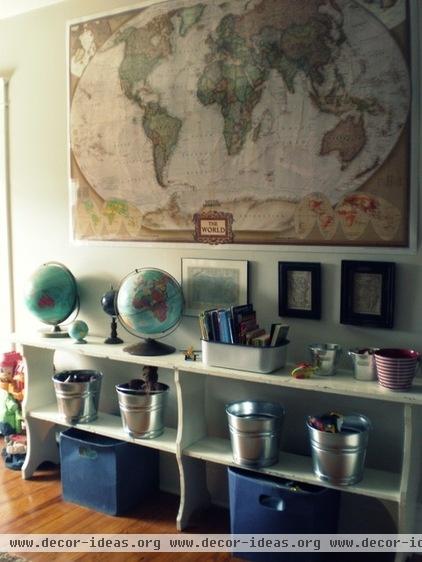
Storage bins don’t just come in canvas or rattan — or solely from a home store, for that matter. Hershman has also used plastic paint cans from a craft store to house blocks and Legos. “One of my best sources is the janitorial supply catalog,” she says.
In this project galvanized buckets make for attractive and tough containers.
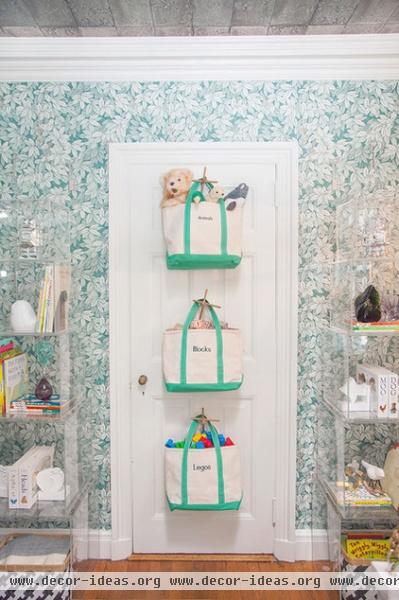
In New York City, where Hershman usually works, finding space for boxlike bins can be tricky. Her solution: softer, narrower storage units. “I had tote bags embroidered with the name of the item they store and then hung them from hooks on the back of a door,” she says. “The parent would have to help bring the tote down and hang it up, but it’s a great solution.”
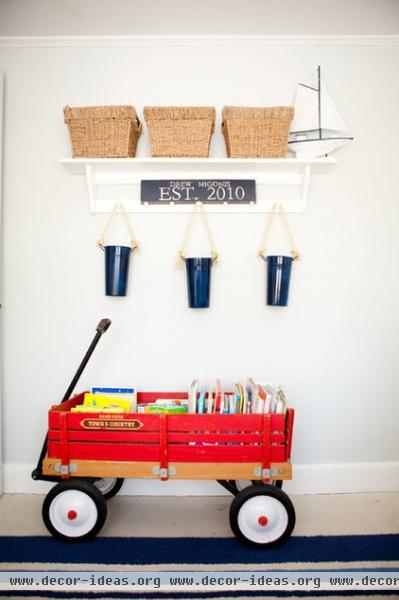
Hershman says that in her projects, mobile storage is a plus. “I often use old-fashioned canvas laundry hampers that have wheels. They have a great industrial look, and the ability to move them from room to room can come in handy,” she says.
She calls the idea of using an old-school red wagon in the same way brilliant.
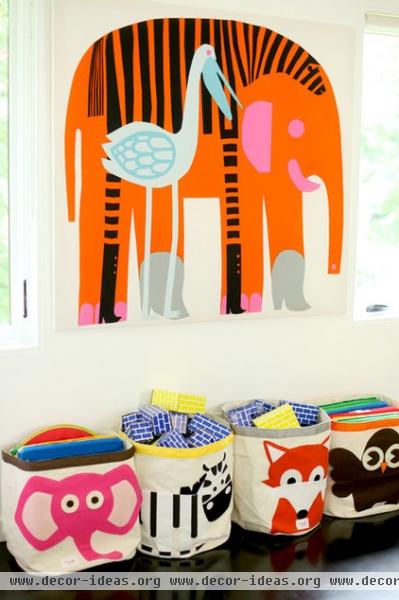
For bulky items, smaller containers won’t always do the trick. Hershman says big canvas hampers can save the day. In this playroom she used them for the largest and unwieldiest toys. “This is why you want to get the smaller stuff up off the floor,” she says. “It makes way for the bigger stuff you can’t store any other way.”
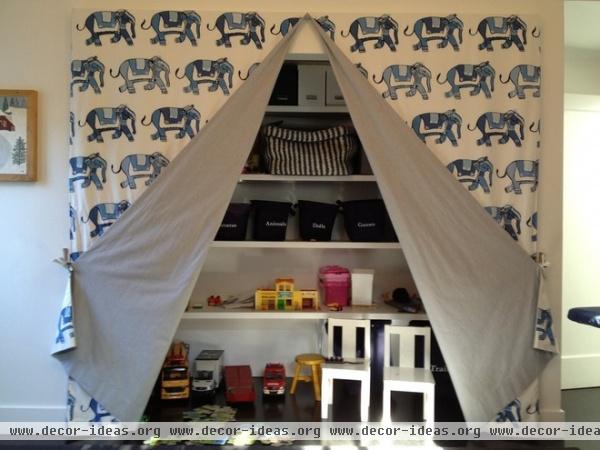
Hershman says that the danger of putting toys behind closed doors is that kids tend to follow the “out of sight, out of mind” philosophy. “It can work, especially for older kids,” she says. “I find it’s even more important to label bins in this setup.”
The designers at Tess Bethune Interiors in Los Angeles added a canvas drape to an open closet in this guest room to create a family room that’s used by all ages.
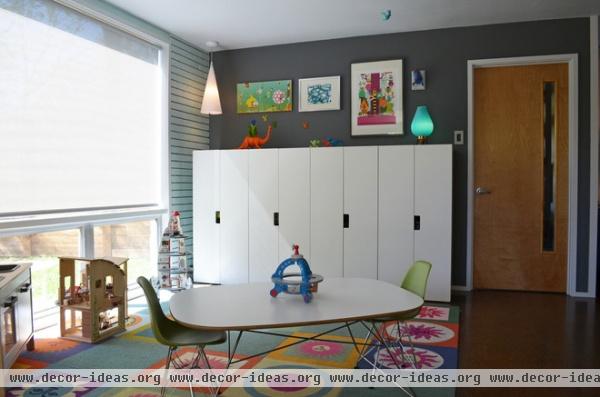
Typical project length: To add bins to an existing shelf is a done-in-a-weekend project. To construct a built-in unit might take up to six weeks.
Permit needed: None.
Best time of year to do this project: Containing toys knows no season.
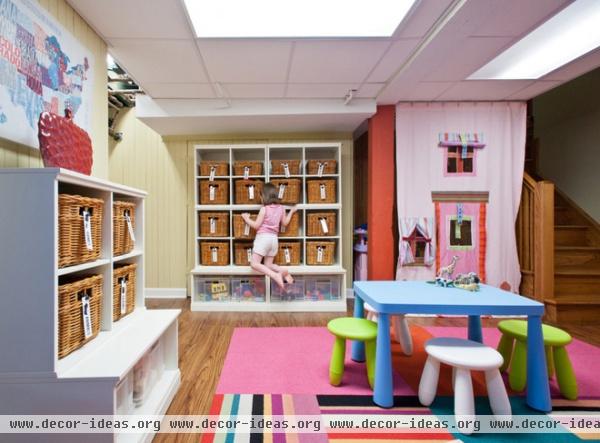
More: Hershman has two pieces of advice. First, be honest with yourself or a design professional. “You have to be realistic about how you live,” she says. “It won’t change after the project is done.”
Second, if you are buying bins, buy the same style for a unified look and always buy a few more than you think you will need. The rattan baskets on the upper shelves in this room, by Amanda Miller Design Studio in Oak Park, Illinois, have different shapes but the same material.
First step: Evaluate where kids like to play and assess the storage opportunities. If you’re setting up the area yourself, carefully measure the area and the bins you want to install. For expert space planning or a larger project, contact a professional for a consultation.
Find a home storage pro in your area
Related Articles Recommended












